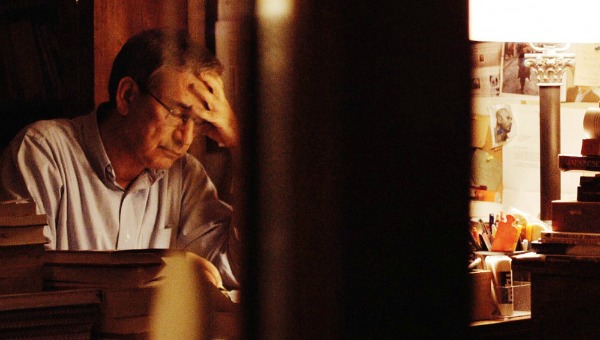 Watching Grant Gee’s feature documentary feels like daydreaming: daydreaming a collective past that is a little blurred and meandering and distant, but utterly captivating in the moment we are lost to it.
Watching Grant Gee’s feature documentary feels like daydreaming: daydreaming a collective past that is a little blurred and meandering and distant, but utterly captivating in the moment we are lost to it.
Grant Gee’s credits include the music documentaries JOY DIVISION and SCOTT WALKER: 30 CENTURY MAN, but INNOCENCE OF MEMORIES is closest cousin to his meditative PATIENCE (2011) which followed the footsteps of W.G. Sebald’s Rings of Saturn. Again investigating another literary work, here Grant Gee explores the cinema essay as an artform, lulling us into a deep dream-state of quiet melancholy. Gee is co-writer (with Orham Pamuk), director and camera-man, involved in every blink and breath of the shots. Leyland Kirkby’s soundtrack adds characteristically haunting and beautiful nuance to the experience.
The film follows the Nobel prize-winner Orhan Pamuk as he returns to themes and characters of his best-selling novel The Museum of Innocence (2008) set in Istanbul, and the real museum it inspired, which opened in 2012. A selected exhibition of the original museum is currently on display in Somerset House.
… hazy lamplight and a smooth omniscient narrator guiding the characters through the puzzle of night …
Gee’s documentary is based on the partly imagined, memoir-style creation that exists in the world today as Pamuk’s novel and complementary museum of found objects that relate to the story of the same name. Gee layers into the love story his own romantic journey through Istanbul by night, passing deserted streets ghosted by lonely taxis and stray dogs, and the absence of them. It is a romance shared by Pamuk, whose love of the city permeates his canon of work.
The novel Museum of Innocence, narrated by Pamuk, is about a young woman Fusan, and her richer, much older cousin, Kemal, who falls deeply in love with her. The film adaptation features the writer as narrator, and this narrative, together with the museum evidence, challenges and pauses our conscious awareness of the fiction. The story is presented as a history, a personal memory. The memories haunt the writer, the city and the characters. The memories are real objects that we study in the film as Pamuk relates extracts of the novel as a diary.
The film is literally dark, set both at night, and within the confines of the window-less museum. It has a noir fug of cigarettes, hazy lamplight and a smooth omniscient narrator guiding the characters through the puzzle of night and the city. Pamuk’s voice and face appear on the TV screens of empty rooms, seeming to permeate the glass of anonymous shopfronts that are poised and empty of people. We are in twilight territory, the magical stillness outside of daily domesticity where romance approaches courtly love, and the past is lovingly curated and presented to us intimately, filling the seeming emptiness.
httpvh://youtu.be/S_D5VLHhO6Q

